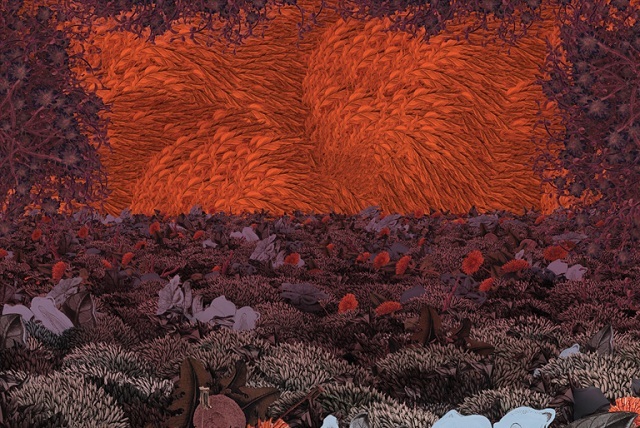



Geoffrey Lillemon (1981 USA) brings a classic romantic painting and drawing style to technology to reinterpret artistic practice. As one of the leading artists of the Net Art Movement, Lillemon has consistently foregrounded the interplay between the digital and physical world in his work, blending the traditional mediums with interactive animation that responds to human touch, brainwaves, and even heartbeats. Using various art forms, from mixed and moving media to literature and soundscapes to classic portraiture, he creates works of hallucinatory poetry that reach into the infinite depths of the subconscious where the real and the imaginary interact. Lillemon has exhibited internationally as Oculart, including being the Invite d’Honneur at the Centre Pompidou, was a founding member of studio Champagne Valentine, and is currently an artist in residence at Random, Amsterdam, Netherlands.
Geoffrey Lillemon
Artist Statement
I don’t see a separation between the digital and physical world anymore. It’s all one thing now. It’s just life, and my art is a reflection of that life. The realm of the subconscious, of imagination and dreams, thoughts and delusions, is no less real than the real world. My work explores the coexistence of the digital and physical through this realm of the subconscious – the space that lies somewhere between imagination and reality, where the real and the imaginary interact.
My work takes the traditional mediums, like painting and drawing, and adds various levels of interactivity and animation to them to create digital pieces of art. In merging technology and art together, I break the art with technology, and break the technology with art. By maintaining a rough edge to the technology, my work allows humanity to filter through and weave stories in the viewer’s mind by creating frantic, hallucinatory visuals of digital affection. Whether Victorian surrealist portraiture or psychedelic projection mapped interiors, my work offers hauntingly seductive environments to lure people in and have an unpredictable interaction with it, to make the viewer feel immersed in it as opposed to looking at a flat surface. This way, the viewer has something human to identify with and can see how we are constantly in a process of masking, concealing, advancing, and retreating from the space of the real.
http://www.champagnevalentine.com/
